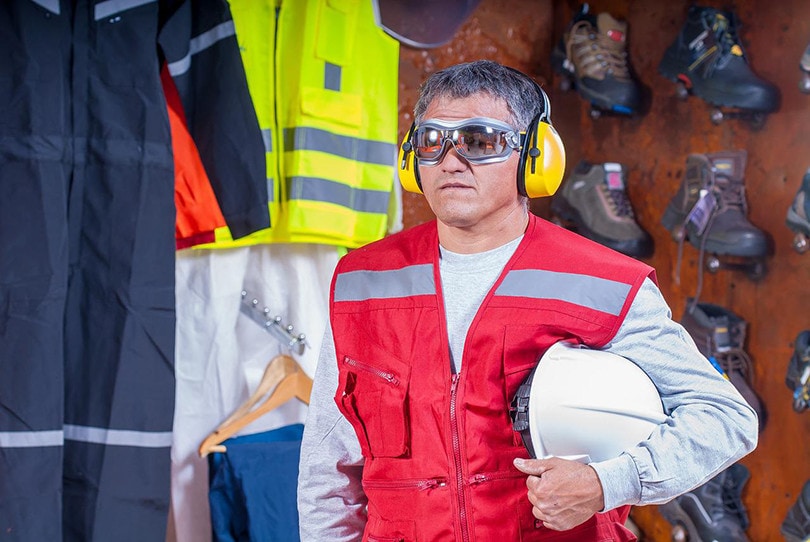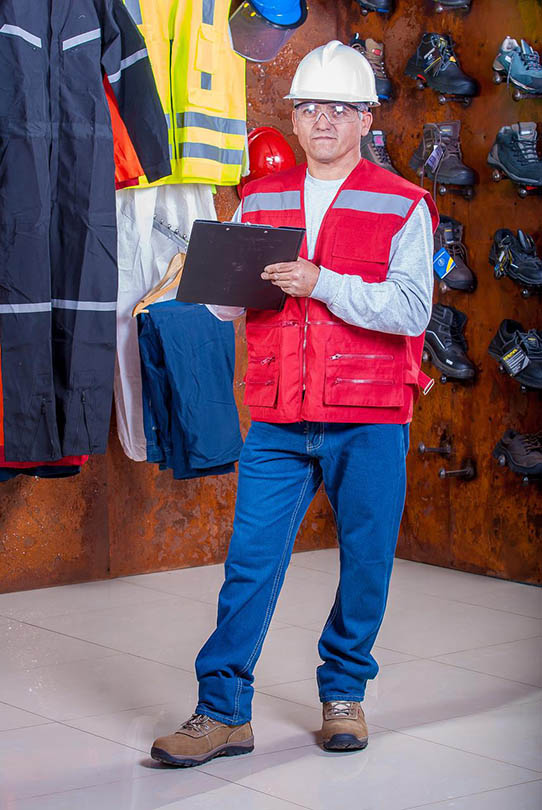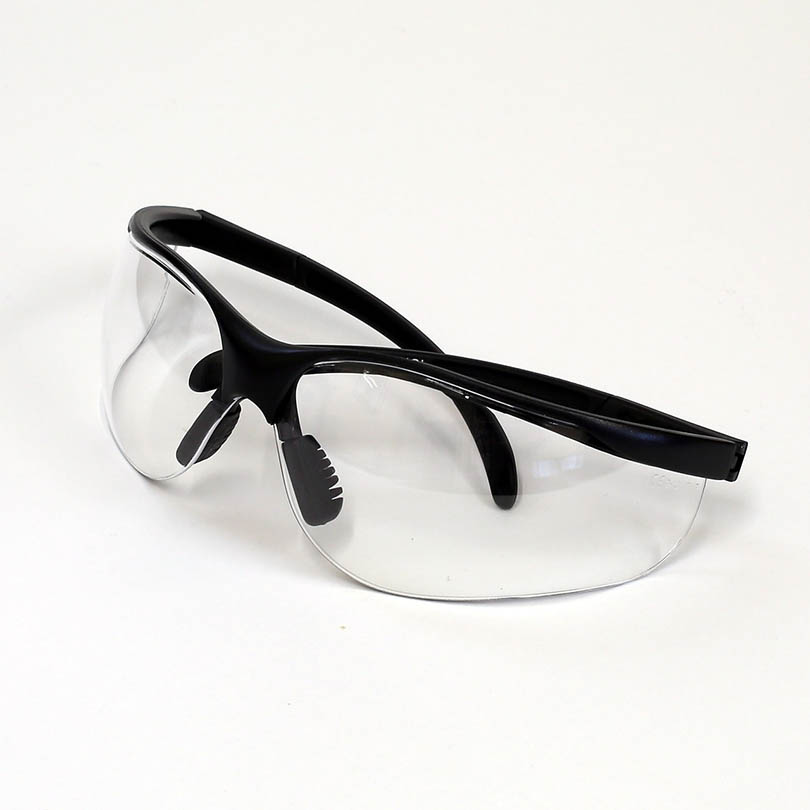11 Facts About Safety Glasses & Eyewear You Never Knew (2024 Update)
Last Updated on

Whether you are looking into safety glasses for the first time or need evidence to back up your workplace safety presentation, you’ve come to the right place.
Safety glasses and eyewear prevent tons of eye injuries each year, and they could prevent millions more if more people wore them when they should. We dedicated this guide to safety glasses and eyewear facts, and we hope that it’ll convince you to wear your safety glasses the next time that you complete a hazardous task!

Facts About Safety Glasses and Eyewear
1. Each Day, 2,000 Workers Injure Their Eyes
Eye injuries at work are common. According to the CDC, on average, 2,000 workers injure their eyes each day. Those injuries add up to many missed workdays, higher insurance costs, and permanent eye damage!
2. Most Eye Injuries Occur From Objects Striking or Scraping the Eye
While many eye injuries occur each day in different environments, the CDC states that most of these injuries occur from objects striking or scraping the eye. These are prime candidates for instances where safety glasses and eyewear could make a difference and protect your eyes!

3. 10% to 20%% of Workplace Eye Injuries Cause Temporary or Permanent Vision Loss
The Industrial Safety & Hygiene News (ISHN) helps put into context what all those eye injuries mean. With 2,000 eye injuries a day and 10% to 20% of those injuries leading to temporary or permanent vision loss, that means between 73,000 and 146,000 eye injuries that lead to temporary or permanent vision loss occur each year.
4. Proper Safety Eyewear Can Prevent 90% of Eye Injuries
The good news is that according to the ISHN, proper safety eyewear can prevent 90% of eye injuries. Not only does this include eye injuries that can occur at work, but it also encompasses other situations where you should be wearing safety eyewear!
5. 1 Million Americans Have Lost Some of Their Sight Due to an Eye Injury
With all these eye injuries happening each year, it’s no surprise that sometimes an injury lingers. But the fact that 1 million Americans have lost some of their vision due to an eye injury is a staggering number, especially when you consider that close to 90% of them could have saved their vision with the proper safety eyewear.
6. Three Out of Five Workers With Eye Injuries Were Not Wearing Eye Protection
According to All About Vision (ALA), 60% of workers who injured their eyes were wearing no eye protection. That means 30% of workers with eye injuries were wearing the wrong eye protection or weren’t wearing their eye protection correctly.

7. Safety Glasses Must Meet ANSI Standards
When you’re looking at safety glasses, you need to ensure that they meet the American National Standards Institute (ANSI) safety standards. Each pair of safety glasses must pass those standards and get a stamp indicating how much protection they offer.
8. Goggles and Face Shields Can Prevent Your Eyes Too
Besides safety glasses and eyewear, goggles and face shields constitute safety eyewear and can protect your eyes. They do a great job of preventing things from getting into your eyes, and they can come impact-resistant rated too.
9. 2.4 Million Eye Injuries Occur in the United States Each Year
The ALA tracks that over 2.4 million eye injuries occur each year in the United States. With people wearing proper eyewear, that number could drop all the way down to 240,000 eye injuries each year, meaning almost 2.2 million eye injuries could be completely avoided each year.
10. Household Items Cause 125,000 Eye Injuries in the United States Each Year
While we often think about work when it comes to personal protective equipment and eye injuries, according to the ALA, 125,000 people injure their eyes with household items in the United States each year. You need safety eyewear at home too!

11. Sports Cause 40,000 Eye Injuries Each Year
40,000 eye injuries occur each year during sporting events, and many of them were likely preventable if people were wearing the proper safety glasses.

How Effective Are Safety Glasses?
Not only can safety glasses prevent 90% of eye injuries, but high-impact safety glasses also possess the ability to stop objects traveling at a speed of 150 feet per second.
In short, if you wear your safety glasses correctly and when you need to, they’re incredibly effective at preventing eye injuries.
What Are Safety Glasses Made Of?
While there are a few different materials that manufacturers can use to make safety glasses, the most common material is polycarbonate. It’s lightweight and affordable and provides good optical acuity, and you can put prescriptions in them!

Can You Wear Safety Glasses Over Regular Glasses?
It depends on the safety glasses. If the safety glasses have a wide edge around the front and this wide edge fits around your prescription glasses and sits flush against your face, they will work just fine.
However, if they don’t have this feature, you cannot wear them over regular glasses. Instead, you must invest in the right pair to get the protection that you need.

Conclusion
Safety glasses prevent millions of injuries each year, so be sure to put them on when you’re doing a hazardous task. It only takes a minor accident for you to become one of these statistics and lose a portion or all of your vision for the rest of your life.
Featured Image Credit: voltamax, Pixabay
Table of Contents
- Facts About Safety Glasses and Eyewear
- 1. Each Day, 2,000 Workers Injure Their Eyes
- 2. Most Eye Injuries Occur From Objects Striking or Scraping the Eye
- 3. 10% to 20%% of Workplace Eye Injuries Cause Temporary or Permanent Vision Loss
- 4. Proper Safety Eyewear Can Prevent 90% of Eye Injuries
- 5. 1 Million Americans Have Lost Some of Their Sight Due to an Eye Injury
- 6. Three Out of Five Workers With Eye Injuries Were Not Wearing Eye Protection
- 7. Safety Glasses Must Meet ANSI Standards
- 8. Goggles and Face Shields Can Prevent Your Eyes Too
- 9. 2.4 Million Eye Injuries Occur in the United States Each Year
- 10. Household Items Cause 125,000 Eye Injuries in the United States Each Year
- 11. Sports Cause 40,000 Eye Injuries Each Year
- How Effective Are Safety Glasses?
- What Are Safety Glasses Made Of?
- Can You Wear Safety Glasses Over Regular Glasses?
- Conclusion
About the Author Robert Sparks
Robert’s obsession with all things optical started early in life, when his optician father would bring home prototypes for Robert to play with. Nowadays, Robert is dedicated to helping others find the right optics for their needs. His hobbies include astronomy, astrophysics, and model building. Originally from Newark, NJ, he resides in Santa Fe, New Mexico, where the nighttime skies are filled with glittering stars.
Related Articles:
How to Clean a Refractor Telescope: Step-by-Step Guide
How to Clean a Telescope Eyepiece: Step-by-Step Guide
How to Clean a Rifle Scope: 8 Expert Tips
Monocular vs Telescope: Differences Explained (With Pictures)
What Is a Monocular Used For? 8 Common Functions
How to Clean a Telescope Mirror: 8 Expert Tips
Brightfield vs Phase Contrast Microscopy: The Differences Explained
SkyCamHD Drone Review: Pros, Cons, FAQ, & Verdict
